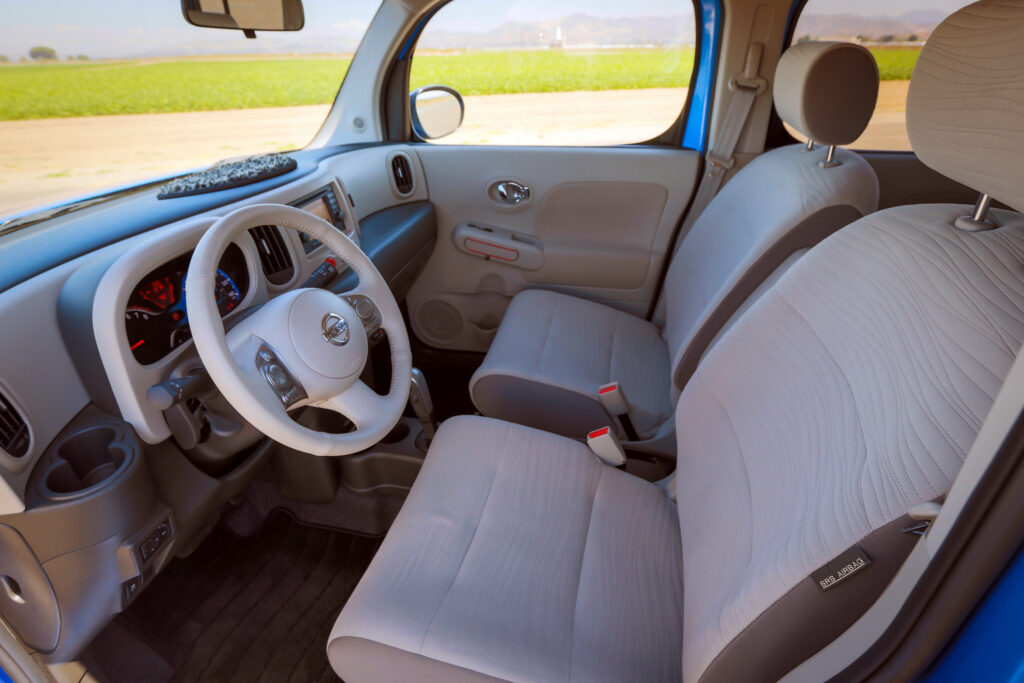

- The NHTSA suspects a failed weld point between the inflator cap and housing.
- Impacted Nissan Cube models are fitted with Takata’s PSDI-X airbag inflators.
- Nissan has collected parts from the field and is investigating the problem.
The Nissan Cube, one of the most bizarre vehicles to ever grace American roads, is now catching the eye of safety regulators, and for all the wrong reasons. After an airbag module detached during a crash, the Cube is under scrutiny for potentially putting its drivers in harm’s way. If you happen to own one of these quirky boxes on wheels, it might be time to pay attention.
The National Highway Traffic Safety Administration’s Office of Defects Investigation (ODI) was recently alerted to a single-vehicle crash involving a 2009 Cube. Instead of deploying as designed, the airbag module detached completely from the steering wheel, first striking the driver and then hurtling into the back seat
Read: Nissan’s CPO Program Gives Used Cubes A New Life With A Makeover
Initial investigations following the crash revealed that while the airbag cushion and inflator stayed secured to their housing, the module itself just couldn’t hold it together. While the investigation is still ongoing, the odd failure raises serious concerns about the integrity of the entire airbag system. And the trouble doesn’t end there.
Takata Strikes Again
It’s been revealed that all 2009 Cube models are equipped with PSDI-X inflators from, you guessed it, Takata. These inflators are among those with propellant that can degrade over time, causing airbag inflators to rupture, potentially spraying shrapnel into the cabin. However, the NHTSA does not believe this issue caused the entire module to detach on the Cube being investigated.

Instead, it’s suspected the rupture occurred at a weld point between the inflator cap and the inflator housing. This may point towards a manufacturing defect involving a weld in the inflator.
The ODI’s ongoing report reveals that Nissan’s inflator-to-vehicle traceability records for models from this era is limited, so it’s having a hard time identifying impacted VINs. The car manufacturer has collected parts from the field for analyst to learn more about vehicles that may be involved, but has so far stopped short of issuing a safety recall.
That said, the ODI’s Preliminary Evaluation will continue digging into the issue, and if a deeper, more widespread problem is uncovered, a recall could be coming down the pipeline.


